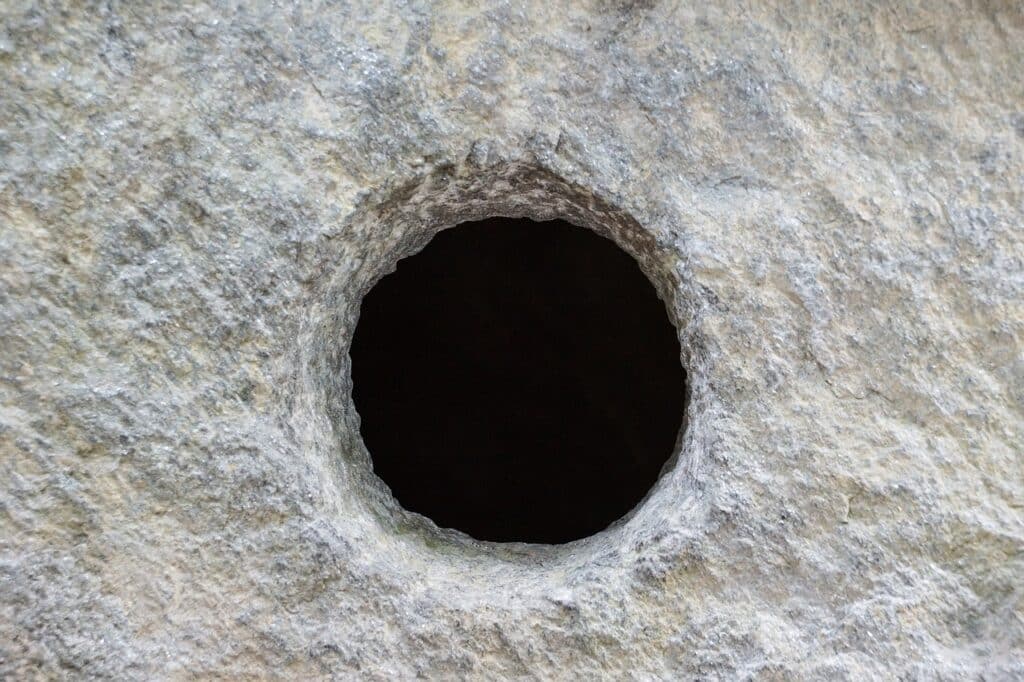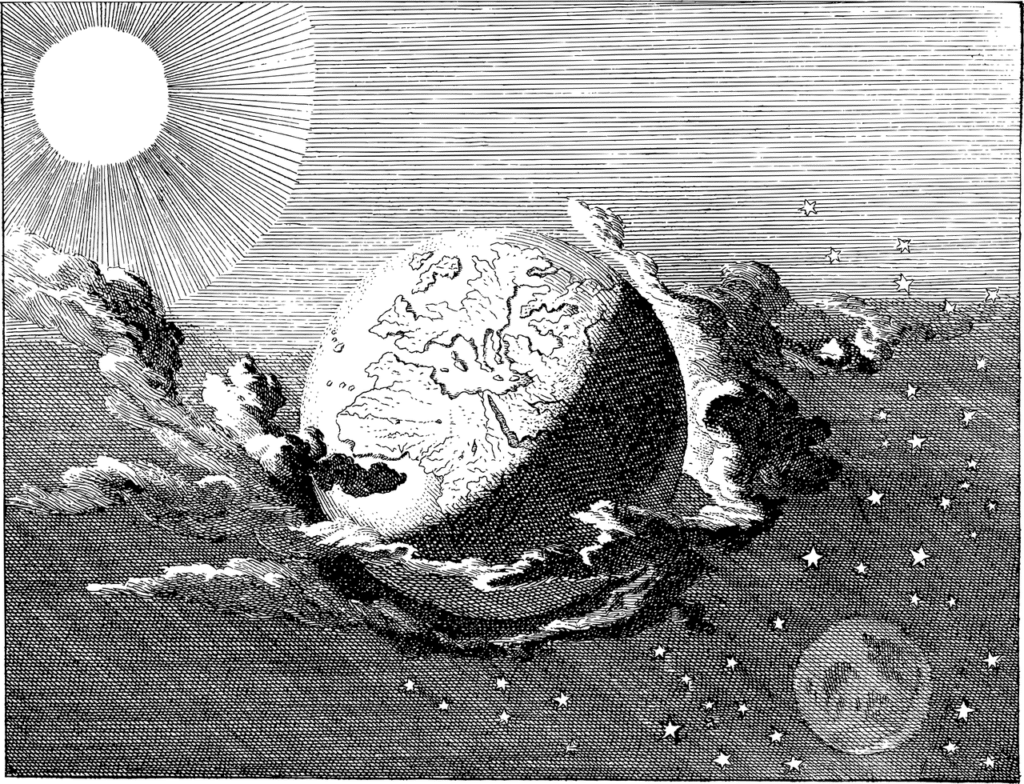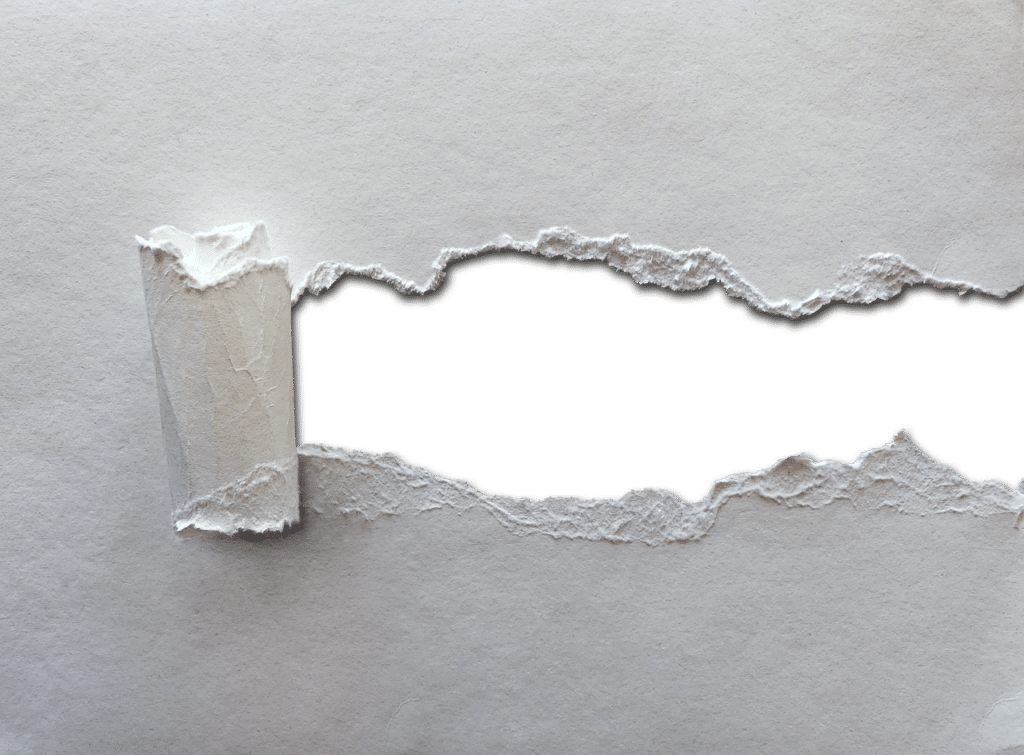Ever looked at holes and stitches and wondered what they could mean in the context of art? Believe it or not, these simple elements can carry profound symbolism and transform your mixed media artwork into something truly thought-provoking.
By incorporating the symbolism of holes and stitches, you can create pieces that are not only visually stunning but also deeply meaningful.
Let’s dive into the rich symbolism of these elements and explore 15 powerful ways to include them in your art.
Understanding the Symbolism of Holes and Stitches
What Do Holes Represent in Art?
Holes can symbolize many things, from absence and emptiness to potential and opportunity. They can represent:
- Absence and Loss: Holes can signify what’s missing or lost, creating a sense of longing or void.
- Opportunity and Potential: Conversely, holes can also symbolize openings or gateways, suggesting possibilities and new beginnings.
- Imperfection and Vulnerability: Holes remind us that nothing is perfect and everything has its own vulnerabilities. A hole can be seen as a vulnerable opening, exposing what lies beneath. It can evoke feelings of fragility or openness.
- Passage and Transition: Holes can serve as portals or passages between different realms—physical, emotional, or spiritual. They signify transformation and change.
- Mystery and Depth: A hole invites curiosity. What’s on the other side? What secrets does it hold? Use holes to create intrigue and depth in your art.
What Do Stitches Represent in Art?
Stitches, on the other hand, often symbolize repair, connection, and resilience. They can convey:
- Healing and Repair: Stitches are associated with mending and healing, both physically and metaphorically. They mend what’s broken, symbolizing healing, resilience, and repair.
- Connection and Unity: Stitches can also symbolize the act of bringing things together, creating unity and coherence.
- Narrative and Storytelling: Stitches tell a story. Each stitch carries intention and history. Consider using stitches to narrate emotions, memories, or experiences.
- Strength and Resilience: The presence of stitches can highlight the strength required to heal and the resilience needed to overcome challenges.
- Texture and Surface: Stitches add texture and dimension to your artwork. They create tactile interest and invite viewers to explore the surface.
Incorporating Holes into Your Mixed Media Art
1. Using Holes to Represent Absence and Loss
- Textures and Materials: Use torn paper, fabric with holes, or punctured canvases. These elements can evoke a sense of something missing, creating a narrative of loss.
- Layering: Layer materials with holes over solid backgrounds to highlight what’s missing. This technique creates depth and draws attention to the absence.
- Themes: Focus on themes like memory, nostalgia, and absence by strategically placing holes to evoke an emotional response.
2. Using Holes to Represent Opportunity and Potential
- Windows and Portals: Create windows or portals with holes, suggesting new possibilities or different dimensions. This can symbolize hope and new beginnings.
- Light and Shadow: Play with light and shadow around the holes. Positioning holes to let light through can create intriguing patterns and suggest new perspectives.
- Contrast: Use contrasting colors and textures around holes to emphasize the potential they represent. This contrast can draw the viewer’s eye and highlight the theme of opportunity.
3. Using Holes to Represent Imperfection and Vulnerability
- Raw Edges: Leave the edges of holes raw and unfinished to emphasize vulnerability and imperfection. This technique can make your artwork feel more organic and human.
- Juxtaposition: Place holes alongside more polished elements to create a striking contrast. This juxtaposition can highlight the beauty in imperfection and the reality of vulnerability.
- Themes: Delve into themes of fragility, imperfection, and human vulnerability by using holes as a central motif. This can make your artwork deeply relatable and poignant.
Incorporating Stitches into Your Mixed Media Art
4. Using Stitches to Represent Healing and Repair
- Visible Stitches: Make stitches prominent and visible to emphasize the act of repair and healing. Use bright threads to make the stitches stand out.
- Materials: Use thread, yarn, or wire to create stitches, adding a tactile dimension to your artwork. Different materials can convey different levels of healing and repair.
- Themes: Focus on themes of recovery, healing, and emotional repair. Stitches can symbolize the mending of broken pieces, both physically and emotionally.
5. Using Stitches to Represent Connection and Unity
- Connecting Elements: Use stitches to physically connect different elements of your artwork, symbolizing unity and cohesion. This can create a harmonious and balanced composition.
- Patterns: Create patterns with stitches to unify the composition and guide the viewer’s eye across the piece. This technique can make your artwork more engaging and cohesive.
- Symbolic Colors: Choose colors for your stitches that symbolize connection, such as reds for love or blues for trust. The color choice can enhance the symbolic meaning of your stitches.
6. Using Stitches to Represent Strength and Resilience
- Bold Stitches: Use bold, thick stitches to convey strength and resilience. This can make a powerful visual statement in your artwork.
- Dynamic Compositions: Incorporate dynamic, crisscrossing stitches to create a sense of movement and energy. This can symbolize the active process of overcoming adversity.
- Themes: Explore themes of overcoming adversity, resilience, and inner strength through your stitched elements. This can inspire and resonate with viewers on a deep level.
Techniques for Integrating Holes and Stitches in Mixed Media Art
7. Combining Holes and Stitches
- Healing the Holes: Use stitches to “heal” holes in your materials, creating a powerful visual metaphor for recovery and resilience. This can make a compelling statement about healing and mending.
- Contrast and Harmony: Balance the rawness of holes with the structured nature of stitches to create harmony in your artwork. This can enhance the overall aesthetic and meaning of your piece.
- Storytelling: Use the interplay of holes and stitches to tell a story of loss and recovery, absence and presence. This can add a narrative depth to your artwork.
8. Experimenting with Textures and Layers
- Mixed Materials: Combine different materials like paper, fabric, and metal, puncturing holes and adding stitches to create rich, textured layers. This can add complexity and interest to your artwork.
- 3D Elements: Incorporate three-dimensional elements by stitching through layers or creating raised areas around holes. This can make your artwork more engaging and interactive.
- Tactile Experience: Enhance the tactile quality of your artwork by using materials that invite touch, like coarse fabrics and thick threads. This can make your artwork more immersive.
9. Playing with Colors and Emotions
- Emotional Palette: Choose colors that evoke specific emotions related to the themes of holes and stitches. For example, use blues for sorrow or reds for passion to enhance the emotional impact.
- Gradient and Depth: Use gradients and color depth around holes and stitches to create a sense of dimension and emotional resonance. This can make your artwork more visually and emotionally compelling.
- Symbolic Colors: Utilize colors symbolically; for instance, white stitches for purity and healing, or black holes for mystery and depth. This can add layers of meaning to your artwork.
10. Creating Visual Balance
- Symmetry and Asymmetry: Balance symmetrical stitches with asymmetrical holes to create visual interest and balance. This can enhance the overall composition of your artwork.
- Focal Points: Use holes and stitches as focal points to draw the viewer’s eye and anchor your composition. This can make your artwork more dynamic and engaging.
- Negative Space: Embrace negative space around holes and stitches to enhance their impact and meaning. This can create a sense of calm and focus in your artwork.
More Techniques to Elevate Your Art
11. Incorporating Personal Narratives
- Storytelling: Use holes and stitches to tell personal stories. This can make your artwork more intimate and relatable.
- Emotion: Convey deep emotions through your art. The combination of holes and stitches can symbolize personal experiences of loss and healing.
12. Exploring Cultural References
- Symbolism: Use cultural symbols for holes and stitches. This can add depth and context to your artwork.
- Themes: Explore themes relevant to your culture. This can make your artwork more meaningful and resonant.
13. Using Found Objects
- Materials: Use found objects with natural holes and add stitches. This can add a unique, organic element to your artwork.
- Texture: Enhance the texture of your artwork. Found objects can add unexpected and interesting textures.
14. Experimenting with Scale
- Size: Vary the size of holes and stitches. This can create different visual impacts and draw attention to specific areas.
- Impact: Create different visual impacts. Larger holes and stitches can dominate a piece, while smaller ones can add subtle detail.
15. Layering Techniques
- Depth: Add depth by layering materials. This can create a more complex and engaging piece.
- Complexity: Create complex, rich textures. Layering can add a sense of richness and intricacy to your artwork.
Stitching Techniques:
- Embroidery: Use embroidery floss, yarn, or thread to create intricate patterns on your canvas. Stitch around shapes, along edges, or even across layers of paper or fabric. Consider using different stitches like running stitch, backstitch, or French knots.
- Collage and Stitch: Combine torn paper or fabric with stitching. Attach pieces to your canvas and then stitch around them. The contrast between the flat collage elements and the raised stitches adds visual interest.
- Layered Stitching: Layer different materials (such as fabric, tissue paper, or handmade paper) and stitch through them. The stitches can hold the layers together while also becoming part of the design.
Symbolic Use:
- Healing and Repair: Intentionally stitch areas that represent healing or emotional repair. For instance, you could stitch over torn paper to symbolize resilience or growth.
- Connecting Elements: Use stitches to connect disparate elements within your composition. Stitch lines can visually link different parts of your artwork, creating a sense of unity.
- Hidden Messages: Write words or phrases on paper or fabric, then stitch over them. The stitches partially obscure the text, creating a hidden message waiting to be discovered.
Creating Holes:
- Cut-Outs: Physically cut holes in your canvas or paper. These holes can reveal layers beneath or allow light to shine through. Experiment with different shapes and sizes.
- Torn Edges: Tear the edges of paper or fabric to create irregular holes. These torn edges can evoke a sense of rawness or vulnerability.
- Negative Space: Instead of adding material, consider leaving areas empty. These negative spaces act as metaphorical holes, inviting viewers to contemplate what’s missing.
Composition Ideas:
- Seascapes and Holes: Imagine a seascape where the waves are stitched lines and the sky has small holes revealing glimpses of stars or distant islands.
- Botanical Elements: Stitch delicate flowers or leaves onto your canvas, and perhaps create tiny holes in the petals or leaves for added texture.
- Mindfulness Journals: Incorporate stitches and holes into art journal pages. Write reflections, then stitch around the words or create holes where thoughts emerge.
Nature-Inspired Themes:
- Tree Bark Texture: Create a textured background using torn paper or fabric. Stitch irregular lines across the surface to mimic the texture of tree bark. Add small circular holes to represent knots or insect burrows.
- Leaf Veins: Cut out leaf shapes from thin paper or fabric. Stitch delicate veins onto the leaves, and perhaps add tiny holes along the edges to evoke the natural wear and tear.
Storytelling Elements:
- Stitched Maps: Incorporate maps (real or imaginary) into your artwork. Stitch paths, roads, or borders onto the map, emphasizing significant locations. Introduce holes where hidden treasures or memories lie.
- Fairy Tale Scenes: Imagine a fairy tale forest with stitched vines, flowers, and creatures. Add holes to reveal magical doorways or secret passages.
Emotional Expressions:
- Heartfelt Stitches: Create a heart shape using stitches. Each stitch could represent a moment, emotion, or memory. Add holes within the heart to symbolize vulnerability or openness.
- Torn and Stitched Letters: Write a heartfelt letter on paper, then tear it into pieces. Stitch the torn edges back together, leaving small gaps. The repaired letter becomes a metaphor for healing.
Abstract Concepts:
- Time and Decay: Use stitches to represent the passage of time. Stitch over old photographs or ephemera, leaving gaps that hint at fading memories. The holes can symbolize forgotten moments.
- Layered Portals: Create layered compositions with stitched openings. Imagine each layer as a different dimension or state of being. The holes act as portals between these layers.
Texture Exploration:
- Fabric Collage: Combine various fabrics (cotton, linen, lace) and stitch them together. Introduce holes strategically to reveal glimpses of the layers beneath.
- Mesh and Stitches: Attach mesh or tulle to your canvas and stitch through it. The holes in the mesh add an ethereal quality.
Interactive Art:
- Lift-the-Flap Art: Stitch small flaps onto your artwork, concealing surprises underneath. Viewers can lift the flaps to discover hidden elements.
- Threaded Beads: String beads onto thin wire or thread, then stitch them onto your canvas. The beads become both visual and tactile focal points.
Remember, your artistic intuition is your best guide. Feel free to adapt these ideas to your personal style and the themes that resonate with you. Whether you’re creating serene seascapes or expressive botanicals, stitches and holes can infuse your artwork with soulful narratives. Happy creating!
Final Thoughts on Holes and Stitches in Mixed Media Art
By understanding and utilizing the symbolism of holes and stitches, you can create mixed media art that is rich in meaning and emotional depth. These elements allow you to explore themes of absence and presence, healing and connection, imperfection and resilience. So, why not give it a try? How will you incorporate holes and stitches into your next art piece? Share your thoughts in the comments below!
FAQs
1. What do holes symbolize in art?
Holes can symbolize absence, loss, opportunity, potential, imperfection, and vulnerability, depending on the context and how they are used.
2. How can I incorporate stitches into my mixed media artwork?
You can use stitches to represent healing, connection, and resilience by making them visible, connecting different elements, and using bold, thick threads to convey strength.
3. Can holes and stitches be used together in art?
Absolutely! Combining holes and stitches can create powerful visual metaphors for healing and resilience, as well as balance rawness with structure.
4. What materials work best for creating holes in mixed media art?
Materials like paper, fabric, and metal are great for creating holes. You can use tools like hole punchers, needles, and scissors to achieve the desired effect.
5. How do colors play a role in the symbolism of holes and stitches?
Colors can enhance the emotional and symbolic impact of holes and stitches. Use colors that evoke specific emotions or symbolize particular themes to deepen the meaning of your artwork.




